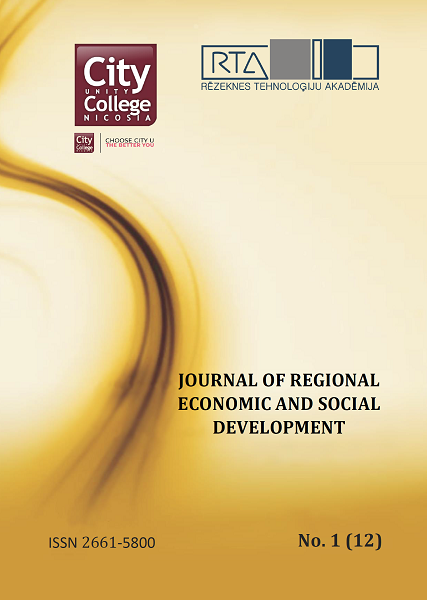ANALYSIS OF LEGO BRAND COMMUNICATION FOR THE AUDIENCE OF CHILDREN IN SOCIAL MEDIA
DOI:
https://doi.org/10.17770/jresd2020vol1.12.5394Keywords:
brand, children’s audience, communication, social mediaAbstract
Social media have become not only a platform for contacts among individuals but also a channel through which companies can maintain constant two-way feedback with consumers. Companies around the world become increasingly aware of the potential of children in the market and increase their communication with the children's audience. The ability to influence a child’s choices through communication via social media could give companies an opportunity to increase their sales. The aim of the research is to assess the elements of social media communication for the LEGO brand and their influence on children’s audience in Latvia. The research concluded that nowadays it is important for a company to identify the right target audience, and only then, based on the company’s strategy, consider the need to use specific tools available in social media. By focusing their communication on children, companies also need to build a parallel relationship with their parents to make sure that the brand is relevant, safe and committed to the values that are relevant to the audience. Nowadays it is fruitful to focus on video content that creates a sense of presence and reality. LEGO is a good source of inspiration for companies in Latvia that want to create a strong brand story, thereby increasing their visibility through communication via social media. The research aim was achieved by identifying the theoretical basis, analysing the communication marketing activities of the LEGO brand focused on children, as well as conducting structured expert interviews and performing a content analysis.
Downloads
References
Ang, L. (2014). Principles of Integrated Marketing Communication. Cambridge University Press.
Cohen, B. (2003). Getting the Word Out: Marketing Children’s Books. Washington, p.287.
Dimitriadis, S., Tsimonis, G. (2013). Brand Strategies in Social Media. Department of Marketing and Communication, Athens University of Economics and Business.
Eranil A.K, Dilci T. (2019) The Impact of Social Media on Children. Handbook of Research on Children's Consumption of Digital Media. IGI Global.
Kemp, S. (2020). Digital 2020: Global Digital Overview. Retrieved July 18, 2020 from https://datareportal.com/reports/digital-2020-global-digital-overview
Luo, M.M. (2020). Uses and gratifications theory and digital media use: the test of emotional factors. International Journal of Social Sciences, 6(1), p.599-608.
Marshall, D. (2010). Understanding Children as Consumers, Los Angeles: Sage, p.211.
Thaichon, P. (2017). Consumer socialization process: The role of age in children's online shopping behavior. Journal of Retailing and Consumer Services, 4, p.38-47.
The LEGO Group Sustainability Progress 2019. (2019). Retrieved July 28, 2020 from https://www.lego.com/en-us/aboutus/lego-group/policies-and-reporting/reports/
Thita. (2020). LEGO 2019 Annual Report & Financial Results. Retrieved July 9, 2020 from http://thebrickblogger.com/2020/03/lego-2019-annual-report-financial-results/


